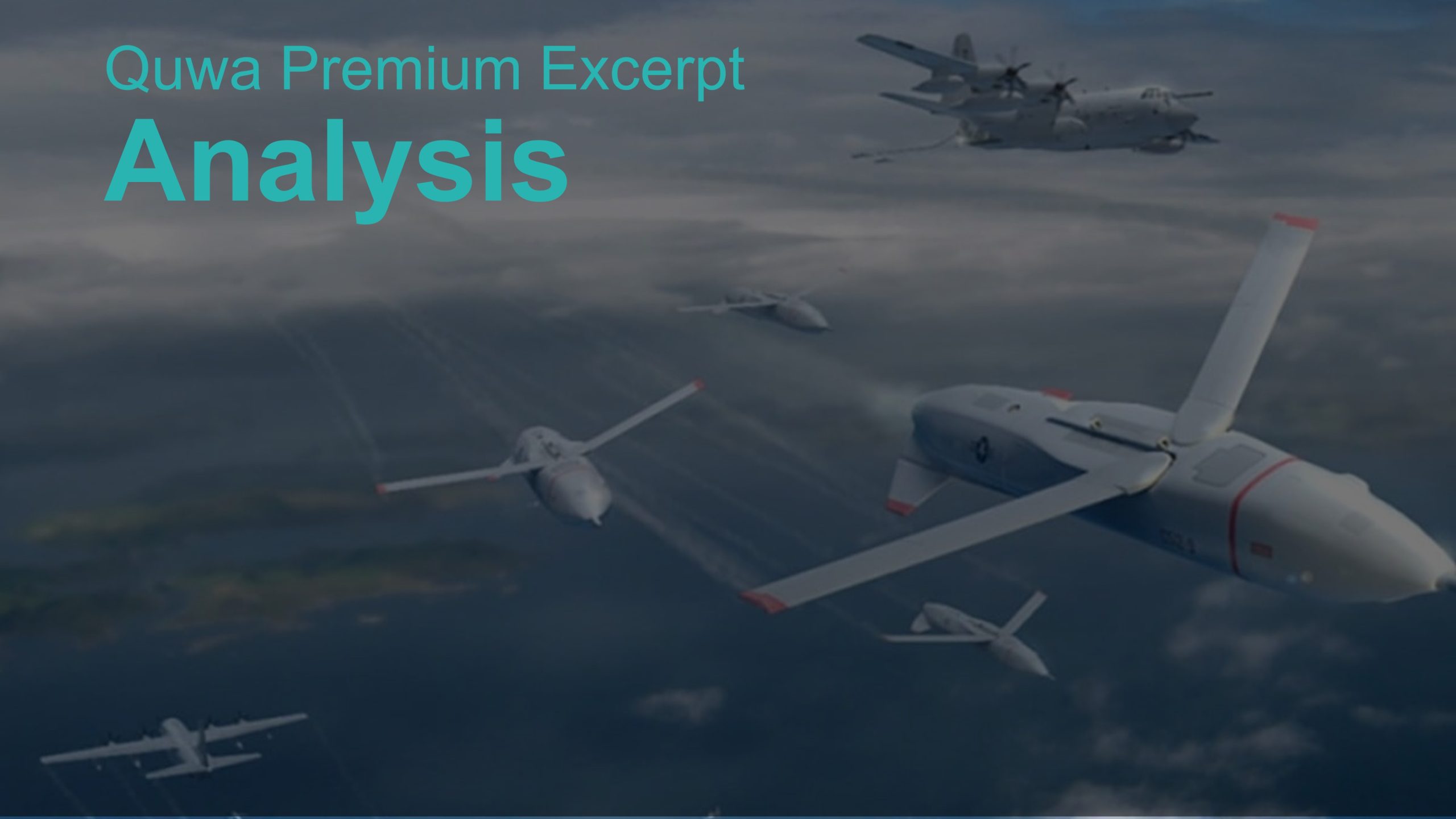1473Views 0Comments

New Mainstay Weapons: Loitering Munitions
In recent years, armament vendors around the world began marketing ‘loitering munitions’ of numerous types and sizes to the global market. ‘Loitering munitions’ are functionally unmanned aerial vehicles (UAV) equipped with explosive warheads and guidance suites. In one way, these weapons draw on technologies from man-portable drones and small or miniature guided missiles or bombs. However, the key feature of a loitering munition, regardless of its size, is its ability to linger in the vicinity of a target at low speeds for more precise targeting or even reconnaissance prior to an attack.
Currently, the most prolific designers and manufacturers of loitering munitions are from China, Israel, and Turkey. However, the list of countries developing these weapons is growing, especially as militaries both understand the theoretical benefit of loitering munitions and see the mounting proof of how drone-based operations can affect conventional warfare scenarios. The U.S. Marine Corps (USMC), for example, opted to deploy the UVision Hero-120 through a modified LAV-25 wheeled armoured fighting vehicle (AFV). For the USMC, loitering munitions will play a key role in potential conflicts against ‘near-peer’ rivals, such as China and Russia. However, if loitering munitions are catching on with the U.S. military, one can imagine how far China or Turkey are envisioning loitering munitions usage and drone operations at large.
How Loitering Munitions Work
The design layout of a common loitering munition involves a 3 kg to 70 kg design. It relies on an electrical motor to power propellers for flight. The range, endurance and warhead size depend on the mass or size of the loitering munition. So, for example, the 3.5-kg ZT-5, which is offered by the Chinese firm Zhongtian Guide Control Technology Co. Ltd., has a 0.5 kg warhead, 40 km range, and 30-minute endurance. But on the other end of the spectrum, the 60-kg ZT-60 has a 25 kg warhead, 150 km range, and endurance of 90 minutes. While the larger ZT-60 would need a dedicated platform for carrying and launching it, the lighter ZT-5 can be carried and launched by an individual soldier. In any case, the nature of the common loitering munition’s inputs indicate that it is, by design, meant to be low-cost, simple-to-build weapon.
Once launched, the loitering munition would head towards its intended target. From that point, the end-user could have the munition loiter in the vicinity of the target, or make it go terminal and engage. If the goal is a precise, low-intensity strike, a single loitering munition could be enough in certain scenarios for the end-user to achieve their goals. However, loitering munitions can become very dangerous if they are used in a saturation or swarm-type attack. This flexibility makes loitering munitions a real option for many types of operations, including suppression of enemy air defence (SEAD) missions. If successful, end-users could eliminate a high-risk threat to their air assets. If unsuccessful, they would not have lost much as the loitering munitions are, by design, meant to be low-cost and disposable.
The constraint of a loitering munition, at least in the near future, is that endurance and range parameters are still limited. The endurance will generally be in the 30-120-minute range, but the additional flight-time would come at the cost of weight. Thus, the larger loitering munition would require launch platforms such as vehicles, ships, or aircraft to deploy them, especially in numbers. The lighter, man-portable munitions will not have much range or payload. The second major constraint is limited range. Like many UAVs, most loitering munitions need a line-of-sight (LoS)-based control station to manage the munition’s operations.
In either scenario, the end-user would need to be closer to the target’s vicinity. This can put the launching platform and control station at risk of exposure and a counter-attack. In fact, the enemy could use UAVs for surveillance coverage and/or electronic warfare (EW) systems to pick-up radio-communication activity that could indicate drone use to uncover the launch vehicle and/or operators. Thus, the next logical step for loitering munition development likely involves autonomous operations wherein the munition manages itself when reaching, loitering, and engaging targets.
China, at least, is definitely signalling that its working in that direction. In fact, it showcased a concept of its FH-97 loyal-wingman drone deploying FH-901 loitering munitions. The goal of loyal wingman drones is to employ UAVs capable of autonomous operations. Thus, it follows that the munitions these drones will launch are also capable of autonomous operations. However, it is unclear how soon this technology stack will materialize for the Chinese, much less become available for export. That said, the leading powers (i.e., the U.S. and China) and emerging powers are all working towards these capabilities.
Pakistan Must Take Loitering Munitions Seriously
Drone adoption is moving quickly in South Asia. Pakistan is building its own fleet of medium-altitude, long-endurance (MALE) UAVs. Turkey showed how one can use MALE UAVs for conventional warfare, but that is only one aspect of drone warfare. Pakistan must also consider drone swarming, loitering munitions, and loyal wingman UAVs as part of its future as well. India is actively working on both of those aspects.
Loitering munitions could greatly augment Pakistan’s ground-based, precision-strike capabilities. Pakistan is clearly building up that capability through the Babur land-attack cruise missile (LACM) and Fatah-series of guided rockets. However, LACMs are expensive and, in Pakistan’s case, potentially cost-prohibitive for saturation strikes. The Fatah-series could be a lower-cost alternative to LACMs, but they will not offer the loitering or easier deployment versatility of a loitering munition.
There is a scenario where Pakistan can use a combination of drones, EW, satellite-based imaging to spot high-value targets near the border. In turn, it can use ground-based assets to start engaging those targets so as to either pressure India into moving them back or negate those threats. Loitering munitions can be a way for Pakistan to station attack assets on standby. Even the heavy loitering munitions weigh less than LACMs or the Fatah-series, and they do not require large, conspicuous launch vehicles.
For Pakistan, entering the loitering munitions ‘race’ may not be difficult. It can consult numerous vendors from within China alone (e.g., Zhongtian Guide Control Technology Co. Ltd.) for such solutions. Based on Pakistan’s recent drone procurement efforts (e.g., CH-4), one can assume an off-the-shelf acquisition of a loitering munitions stockpile could be on the cards already. In this scenario, the purchase would be similar to Pakistan’s other munitions acquisition programs. It basically acquires a stockpile it deems sufficient for its immediate operational needs. In general, Pakistan does not seek transfer-of-technology (ToT) for local manufacturing for such munitions. It simply buys what is available with a plan to supplement or supplant them later with a follow-on purchase of a more advanced munition later.
The only exception to this rule seems to involve mass-deployment weapons, e.g., anti-tank missiles and man-portable air defence systems (MANPADS). In these cases, the military envisions building an incredibly large stockpile through ongoing, multi-decade-long acquisition programs.
In this scenario, Pakistan could work with a capable supplier to design a solution for its needs and, in turn, transfer the knowledge and capacity to manufacture it in Pakistan. In this regard, Pakistan’s top partners have generally been Chinese companies.


